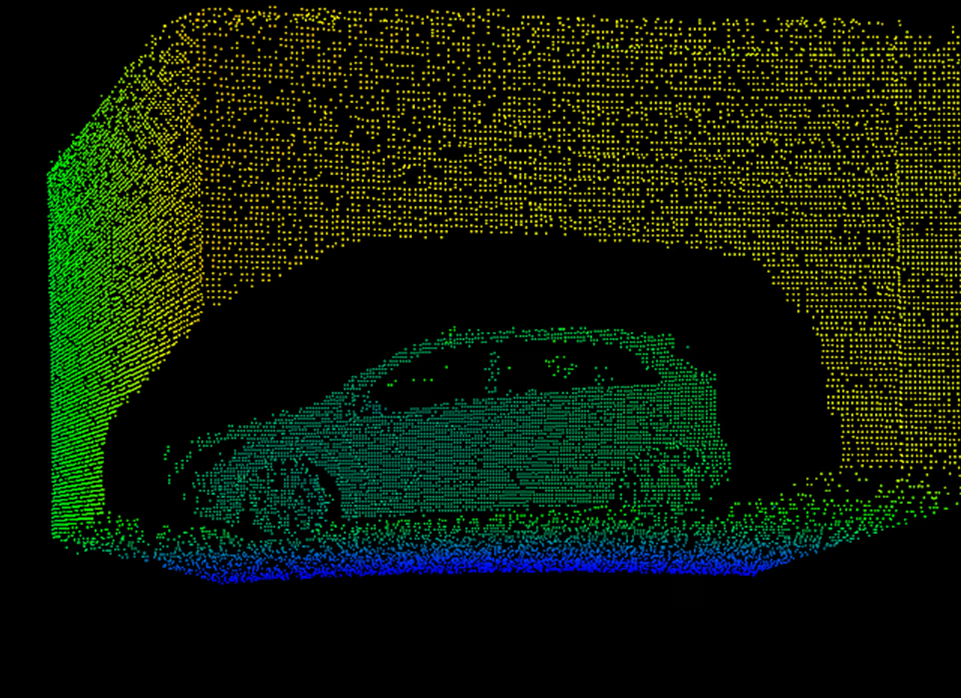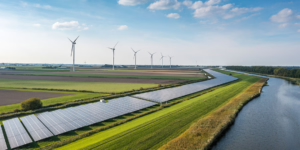

Climate, Energy & Mobility
Whether you are working in clean energy, sustainable mobility, or climate solutions, you face constant pressure to reduce emissions, improve efficiency, and build resilient infrastructure. Photonics — the science and technology of light — gives you powerful tools to achieve this, from harvesting renewable energy to monitoring critical systems and creating smarter, greener transport.
Photonics offers endless possibilities
Discover how you can:
- Decrease data carbon footprint through photonic integrated circuits (PICs)
- Monitor environmental & climate change through optical sensing
- Boost wind & solar energy productivity through LiDAR mapping & optical concentrators
- Achieve smart, durable lighting by using LED and laser systems for vehicles, roads, and runways
- Improve safety with sensors by monitoring vehicles, planes, railways, and drivers’ attention
- Enhance autonomous mobility through 3D awareness with photonics sensors and LiDAR
And so much more!

How photonics can support your innovation
In the industry of climate and energy, photonics helps to reduce resources and energy at every stage of their value chain, from generation to consumption. By using optical concentrators, LEDs/OLEDs, PICs, distributed fibre optical sensing and laser-enabled manufacturing, producers and consumers can decrease conversion losses and operating costs. Photonic technologies can also be used for performance monitoring (both in residential and industrial scenarios) as well as for environmental protection and circular processing, helping to better understand and act upon climate change.
In mobility, the technology is increasingly used in the manufacturing and operation of mobility systems and infrastructure, making roads, railways and airspace safer, more efficient and more sustainable. Applications include structural health monitoring with fibre optical sensors, intelligent lighting with LED and laser systems, and 3D laser scanning for autonomous unmanned aerial vehicles UAVs). It is improving energy efficiency, supporting safer rail networks and replacing large aircraft with small UAVs equipped with lightweight sensors and imaging systems.
Together, these innovations show how photonics enables cleaner energy, safer transport, and smarter responses to climate challenges.

How photonics is applied in Climate, Energy & Mobility
Explore how photonics is already being used across solar power, smart lighting, sensors, and infrastructure, delivering real-world benefits in efficiency, sustainability, and environmental impact.
Apply for innovation support
Solar cells (transparent, flexible, decorative, large-area)
Photovoltaic technologies are being developed into new form factors, such as flexible or transparent solar panels. These can be integrated into windows, building façades, or even textiles. Decorative PV panels combine design and function, allowing buildings to generate energy while also contributing aesthetically to architecture.
Indoor and outdoor testing equipment for solar components
To ensure reliability and efficiency, optical and photonic test systems are used to evaluate the performance of solar cells and modules under varied environmental conditions. These include light intensity, temperature, humidity, and mechanical stress. Such tools help improve both durability and yield.
Micro- and nano-optical components for light harvesting and daylighting systems
Tiny optical structures and coatings help capture more light for energy conversion or distribute daylight more effectively within buildings. This reduces the need for artificial lighting. Innovations at micro- and nano-scale can improve both energy efficiency and user comfort.
Optical design for solar concentration systems
By using mirrors and lenses (optical concentrators), sunlight can be focused to increase energy density and improve conversion efficiency. Photonics plays a key role in the precise design of concentrator shapes, materials, and tracking systems.
Distributed fibre sensors for energy delivery optimisation
Fibre-optic sensors embedded in power delivery networks, such as grids and pipelines, can monitor temperature, strain, or other stressors in real time. This enables the early detection of inefficiencies or faults, allowing timely maintenance and reducing losses.
PIC-based fibre readout systems for wind turbines
Photonic Integrated Circuits (PICs) used in fibre readout systems provide lightweight, compact, and robust monitoring for wind turbine blades or tower structures. They track deformation, vibration, and structural health to improve safety and extend operational lifespan.
Structural health monitoring of wind turbines
Lasers, fibre sensors, and imaging systems can be used to monitor the integrity of turbine components, including blades, towers, and joints. This makes it possible to predict failures before they occur, plan maintenance effectively, and reduce downtime.
Pipeline monitoring
Energy pipelines for gas, oil, or hydrogen can be monitored optically for leaks, corrosion, or stress. Photonic sensors enable non-invasive, continuous monitoring to maintain both safety and efficiency.











